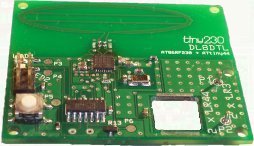Carambola comes with two ethernet interfaces. One is configured to use the static
IP address 192.168.1.1 (eth0), the second one gets its address via DHCP (eth1).
If the static IP address does somehow not fit in your existing network
infrastructure, use the second ethernet port. Connect the ethernet cable an
watch, if the aproriate LED on the Carambola module ligts. Now you can easily
find out the assigned IP adresses by typing ifconfig in the serial terminal:
root@OpenWrt:/# ifconfig
br-lan Link encap:Ethernet HWaddr C4:93:00:00:00:AF
inet addr:192.168.1.1 Bcast:192.168.1.255 Mask:255.255.255.0
.....
eth0 Link encap:Ethernet HWaddr C4:93:00:00:00:AF
.....
eth0.1 Link encap:Ethernet HWaddr C4:93:00:00:00:AF
.....
eth0.2 Link encap:Ethernet HWaddr C4:93:00:00:00:AF
inet addr:172.16.1.127 Bcast:172.16.1.255 Mask:255.255.255.0
.....
lo Link encap:Local Loopback
inet addr:127.0.0.1 Mask:255.0.0.0
.....
Before you can connect via ssh to Carambola, you need to assign a root password
in the serial terminal. Type passwd and enter the password. In the next step,
the ssh command will stop with an error:
axel@desktop$ssh roo@172.16.1.127
ssh: connect to host 172.16.1.127 port 22: Connection refused
Thats because of the firewall on Carambola blocks port 22.
TODO: how to configure the firewall
The way out is easier if your PC runs a ssh daemon and the firewall of the
desktop PC does not block port 22. For an Ubuntu you can open the firewall for
port 22 with the command ufw allow 22. Now the ssh connection from Carambola to
the desktop PC will be successfull. Here is a part of the session log opened
from the serial console of Carambola:
root@OpenWrt:/# ssh axel@172.16.1.124
Host '172.16.1.124' is not in the trusted hosts file.
(fingerprint md5 52:1f:41:eb:e3:74:76:e5:6e:14:40:3c:36:fb:73:f4)
Do you want to continue connecting? (y/n) y
axel@172.16.1.124's password:
Linux dellbox 2.6.35-32-generic #67-Ubuntu SMP Mon Mar 5 19:35:26 UTC 2012 i686 GNU/Linux
Ubuntu 10.10
Welcome to Ubuntu!
* Documentation: https://help.ubuntu.com/

